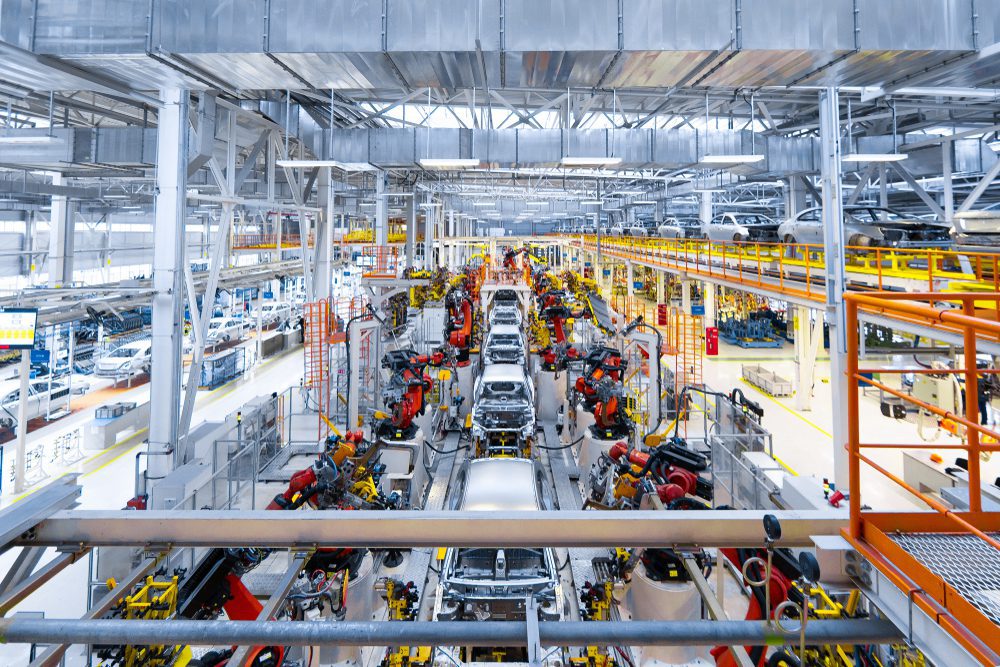U.S. auto sales showed a bit of an improvement from May but paled in comparison to the more active market of last year. TD Economics and Cox Automotive found the unadjusted sales volume for June to be around one million units (1.1 million and 1.125 million units, respectively). According to Cox Automotive, the sales fell below their forecast of 1.2 million for June 2022.
Overall, sales numbers have grown sluggishly, with the automotive industry seeing an almost 9,000 unit drop in the per day selling rate (43,336 vs. 52,089) compared to last year. What’s leading to this drop in auto sales, and what automakers are on top? Here’s a look at June car sale takeaways below.
June auto sales increase over May
Both TD Economics and Cox Automotive show annualized sales of around 13 million. The former has June annualized units at 13 million, while Cox showed a forecast of June finishing around an annualized amount of 13.8 million. Cox forecasted that June would see a 7.5% increase in new car sales compared to May.
However, TD Economics did show a sales increase, but only a slight bump at 2.6%. Nevertheless, the decline from the previous year was a bit more than Cox Automotive expected, with the firm adjusting its new-vehicles sales forecast to 14.4 million units instead of 15.3 million.
General Motors retakes the top spot
In 2021, Toyota overtook General Motors as the top sales leader for the first time since 1931, according to Reuters. A year later, in the second quarter of 2022, General Motors retook the top spot. General Motors said they sold 582,401 units in June, and Toyota moved 531,105 units.
| Related: Ford Motor Company posts quarterly sales uptick, EV sales jump 76.6% |
Reuters further revealed that while General Motors took the top spot, they still saw a 15% decline in auto sales compared to last year. Toyota also saw a 22% dip in sales. According to Cox Automotive, other significant automakers saw declines across the board, with standouts being Honda, Mazda, Buick, and Nissan.
The inventory problem still plaguing automakers
 In addition to rising vehicle prices and higher interest rates, one of the leading automotive retail issues is a continuous lack of inventory. According to Cox Automotive, compared to June 2021, Honda experienced a 70% drop in its stock.
In addition to rising vehicle prices and higher interest rates, one of the leading automotive retail issues is a continuous lack of inventory. According to Cox Automotive, compared to June 2021, Honda experienced a 70% drop in its stock.
Buick saw a 45% drop, while Mazda’s was down by half. Much of the issue is related to continued supply chain hiccups. Even General Motors has experienced problems fulfilling consumer demand as nearly 100,000 cars are waiting for parts. As long as automakers cannot meet consumer demand and supply chains continue to shudder, reaching higher heights in auto sales may be challenging.
Can year-over-year also lulls be due to dragging confidence?
While lagging supply chains, inflation, and higher rates can be blamed for some of the drop in auto sales from 2021, consumer confidence — likely impacted by these elements — is also a factor. According to a Bloomberg report, June’s Conference Board’s consumer confidence index dropped to its lowest since February 2021.
On the other hand, a measure of expectations — consumer’s six-month outlook — dropped to its lowest in the last ten years. Americans are beginning to look around them and feel less confident about the economy, which can extend to big purchases like cars.
Many factors are leading to less robust sales numbers. However, it remains to be seen if the second quarter of 2022 will continue to be a mixed bag of good and “could-be-better.”
Did you enjoy this article from Chanell Turner? Please share your thoughts, comments, or questions regarding this topic by submitting a letter to the editor here, or connect with us at newsroom@cbtnews.com.
Be sure to follow us on Facebook, LinkedIn, and TikTok to stay up to date.
While you’re here, don’t forget to subscribe to our email newsletter for all the latest auto industry news from CBT News.










